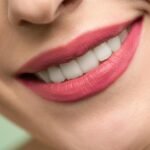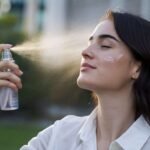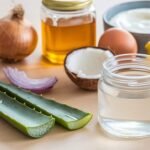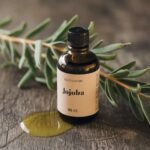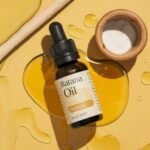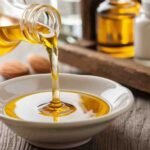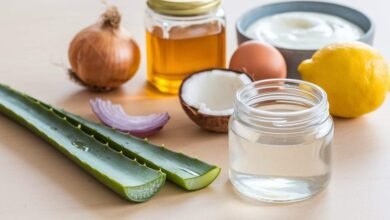What Are Active Ingredients In Skincare
In this article we will talk about What Are Active Ingredients In Skincare? Skincare has developed into a complex field of science and self-care, going beyond its simple beginnings as cleansing and moisturizing products. Active chemicals are essential to this progression since they are potent substances that instantly affect the skin’s appearance and health. This comprehensive book delves into the complex world of active substances in skin care list , examining their many functions, common kinds, specialized talents, and the craft of creating personalized skincare routines.
I. Introduction to Active Ingredients in Skincare
Effective skin care compositions are built on active ingredients, which produce outcomes that move beyond superficial improvements. It is vital for everybody trying to traverse the large terrain of skincare products to recognize their relevance. These materials have bioactive features that paint immediately with the skin to cope with specific troubles and provide noticeable consequences.
II. Common Types of Active Ingredients
1. Antioxidants
Antioxidants stand as formidable guardians against the onslaught of free radicals, the unstable molecules that wreak havoc on our skin cells. Vitamin C and vitamin E reign supreme in the realm of antioxidants, scavenging free radicals and bolstering the skin’s natural defense mechanisms. Their inclusion in skincare formulations offers protection against environmental stressors while promoting a youthful, radiant complexion.
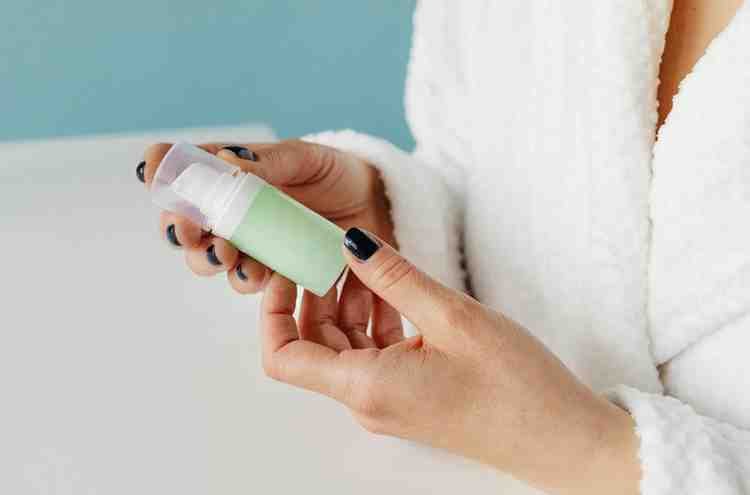
2. Hydrators and Moisturizers
Imparting good skin is done through proper hydration and it is thus, becoming aware of the difference between moisturizing and hydrating elements is very significant for accommodating various skin types. The first one is glycolic acid which is a kind of alpha hydroxy acid that acts as an exfoliate, thus gradually removing the dead cells from the skin surface. The other factor is hyaluronic acid which provides the best moisture binding capacity and is therefore best in the elimination of fine lines and wrinkles. In contrast, compound hydrating can be achieved with ingredients like glycerin and shea butter that draw water into body via the epidermal barrier and prevent transepidermal water loss.
3. Exfoliants
The exfoliation process reveals glowing new skin from the removal rather than the restoration of dead cells and debris that glom to the skin’s surface. Enzyme/microdermabrasion is a form of physical exfoliation that removes dead skin cells by sanding or using tiny pellets. Chemical exfoliants such as alpha hydroxy acids (AHAs) and beta hydroxy acids (BHAs) dissolve bonds between skin cells, giving gentle but effective exfoliation. While soft may facilitate access to such fine offers as salicylic acid and alpha hydroxy acids, the hardy physical exfoliants unleash the powerful granules or brushes to instantly remove impurities. The mechanical properties of the approach are the most versatile.
4. Sunscreen Agents
Covering the skin against the sun radiation is essential not only for healthy but also aging skin. The ingredients of sunscreen from chemical filters such as avobenzone to physical ones like zinc oxide, play defence roles that bounce off the perilous UV rays. As choosing sunscreen is a way of protecting your skin from the radiation of the sun, knowing factors like SPF (sun protection factor) and broad-spectrum protection is a way of choosing the sunscreen formulation which suits your individual needs.
5. Anti-Aging Ingredients
The wish to retain youthfulness has a commonplace character worldwide, involving active ingredients especially in staying youthful. Retinoids, most preferred among dermatologists and users for its anti-aging power, boost collagen production and accelerate cellular turnover, thus removing the etched in fine lines and wrinkles. As it goes, peptides offer target-driven effects when working on skin signals in synthesis of critical proteins for the purpose of restructuring and tightening loose areas thus achieving a refined look.
Also Read:
- Top 10 Moisturizers for Every Skin Type
- Top 6 Benefits of Primose Oil For Skin.
- My Dental Healthy Journey
- Understanding Hair Porosity: Tests, Tips, and Care Routines
- Top 10 Amazing Benefits of Rose Water for Skin
III. Specialized Active Ingredients
1. Skin Brightening Agents
From uneven skin tone to hyperpigmentation, these two issues are skincare concerns of the present, therefore to achieve a great skin we need to add the skins brightening ingredients into our daily skincare routines. Niacinamide also, a multifunctional cosmobable that hinders melanin production and lightens dark spots, gives vivid, uniform skin tone. Likewise, the licorice extracts incorporate its anti-inflammatory potential to cool down redness and brighten up dark spots, that can help show a skin that gleams.
2. Acne-Fighting Ingredients
Acne, that dermatological issue we all dread, is the number one culprit structural and functional anomaly, therefore those interventions should be particularly directed at reducing inflammation and regulating sebum production. Salicylic acid, a BHA, is known for being able to get deep into pores thanks to its effectiveness to remove impurities and decrease congestion. Hence, it earned its well- deserved position as an anti-acne companion that is hard to do without. Benzoyl peroxide as an antibacterial that attacks the bacteria, also soothes the pain, and release of acne is the next in line.

3. Calming and Soothing Ingredients
Sensitive skin demands for to be relaxed but also effective solutions that help reduce redness, itching, and uncomfortable feelings. Aloevera, infamous for its sensitive benefiting characteristics, provides a balm to troubled skin by relating itself to the moisturizing and anti-inflammatory properties which it possesses. Chamomile, a well-known for its potent anti-irritant property, relieves sensitive skin and diminishes redness, which makes it a suitable component for individuals having sensitive or acne skin.
IV. Understanding Ingredient Labels
1. Decoding Skincare Product Labels
The frightening maze that skincare products labels are composed of is often a problem for many people who seek for quality products, but understanding them is a must for consumers who do not wish to be disappointed. Close examination of ingredients labels helps consumers determine which active ingredients they need and how effectively they are included in the formulas. Hence, they can make rational decisions to utilize products that are exactly what their bodies need, instead of being misled by marketing tools.
2. Ingredient Combinations
The combination of the active ingredient’s action on each other can result in a situation where their individual effectiveness is multiplied to shocking levels resulting in amazing changes in the skin. Due to the so-called combination and synergistic effect start with items such as vitamin C followed by ferulic acid, the overall antioxidant protection is highly enhanced and the skin is much brighter.
The next family in sequence and together also have synergistic effect such as niacinamide, and zinc oxide which play the role such as controlling the amount of sebum that is produced as well as Nevertheless , such pairing should be done with good judgement so that contradiction doesn’t occur. This will make the overall treatment process less effective and lead to more adverse reactions.
V. Personalization and Skincare Routines
1. Tailoring Products to Individual Needs
Customizing our skincare regimens that accord with our skin types and specific issues clearly makes us honor the diversity of skin types and concerns. A skin type assessment, pinpointing of parties and achievement goals, provides the necessary basis for a result-proven regimen tailored to correct such shortcomings by putting actives just where needed. Counseling with a skincare expert will be the provision of the latest information, innovations, and recommendations in the pursuit of the best outcomes possible for skincare usage.
2. Layering Active Ingredients
Through the process of appropriate layering of the skincare products there is an insurable synthesis and efficiency of active ingredients which in otherwords translates to maximum benefits to the skin. Having said that, it observation of the correct order of product application – from the lightest serum to the occlusive moisturizers, one ensures their efficient permeation and avoids any interactions or irritating components. Properly designed clothing technique is the best way to realize the capabilities of the active ingredients and this way to achieve their skincare goals.
VI. Conclusion
Active ingredients provide the foundation of modern skincare, being the key players concerned with improving the general look and heri of people among a number of other issues. Having learned about various active ingredients either from the experts or the product labels, consumers can make up their mind when they are ready to take control of their skin care choices such that they select synergistic collections that individually address their bodies needs. Through the utilization of the positioned power of active ingredients one could help them unveil the mysteries to glowing, healthy skin which in turn boosts confidence and vitality in you.Also Follow us on medium.
FaQs:
Q1: What are active ingredients in skincare?
Primary actives are the compounds/substances that are literally in the product that produce the expected effect on skin. They are carefully formulated with specific additives and have a huge advantage – they can affect one’s skin in a visible way. They can be segmented from different sources such as plants, minerals and synthesized compounds respectively, offering different advantages depending on each of the source.
Q2: How do active ingredients benefit the skin?
According to the nature of the ingredient, skincare products cater a number of concerns of all skin types. They can minimize the existence of wrinkles and fine lines, fade melasma and hyperpigmentation, hydrate and moisturize dry skin, treat acne and pimples, enhance the texture and complexion of skin and help in preventing damage to the skin by environmental stress factors like pollutants & sun radiation.
Q3: Are active ingredients suitable for all skin types?
On the other hand, a lot of active ingredients cause less problems when applied to skin type, some of which can be too harsh or irritating among people with sensitive or reactive skin. You need to use the products tailor-made specifically for the type of your skin and look out for the impediments and then test them on your skin for the first time before applying them all over your face.
Q4: Can I use multiple active ingredients in my skincare routine?
In response to your query, yes, you can have several known active ingredients in your skincare, but please be cautious not to overload the skin with too many such potent ingredients simultaneously. You need to gradually introduce one ingredient at a time, and see how your skin reacts before adding any other additional products.
Q5: How long does it take to see results from active ingredients?
The time range for experiencing the active ingredients functionalities differ from one ingredient to another and between the active ingredient and the individual skin issues. While a little bit of the people clearly see a difference soon (within 3 or 4 weeks for example), it can take several weeks or even months to achieve the desired results.
- Top 10 Moisturizers for Every Skin Type
- Top 6 Benefits of Primose Oil For Skin.
- My Dental Healthy Journey
- Understanding Hair Porosity: Tests, Tips, and Care Routines
- Top 10 Amazing Benefits of Rose Water for Skin
- Aloe Vera Hair Masks for Healthy and Beautiful Hair
- Natural Ways to Remove Sun Tan Fast
- How to Get Thick Hair: Simple Habits for Thicker, Longer Hair
- Is Jojoba Oil Good for Low Porosity Hair?
- Top 7 Skin Benefits of Batana Oil
- DIY Face Masks for Glowing Skin: Natural Remedies
- Natural Remedies for Clear Skin: Glow Naturally
- Rosehip Oil for Acne Scars: Does It Really Work?
- Almond Oil for Hair: Tips for Thicker Locks
- Top 10 Natural Remedies to Stop Hair Fall
- Benefits of Argan Oil for Long And Silky Hair
- I Ate This And Achieve Flat Belly And Glowing Skin
- How to Reduce Sunburn Redness Overnight
- How To Look Pretty In 5 Mins Without Makeup
- 10 Best Sunscreens For Sensitive Skin


